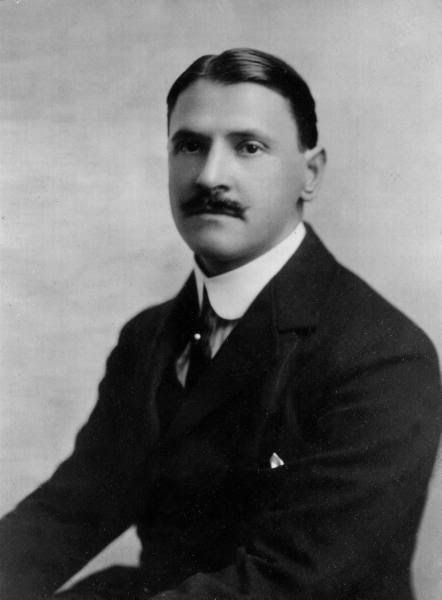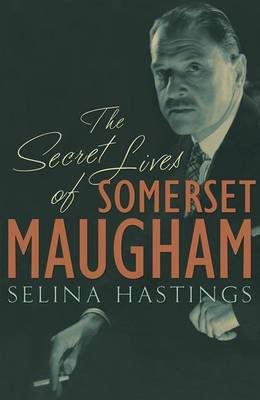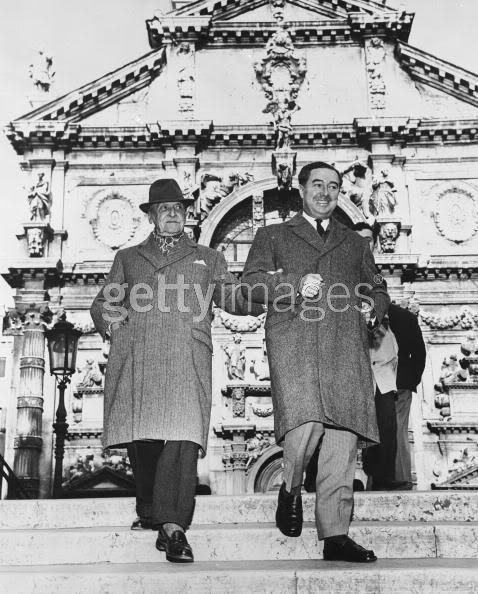The Drama QueenWilliam Somerset Maugham’s colorful but less than happy life is the subject of a new biography, The Secret Lives of Somerset Maugham, by Selina HastingsReview by Neel Mukherjee in TIME magazine, 16 Nov 2009http://www.time.com/time/magazine/article/0,9171,1934870,00.html William Somerset Maugham
William Somerset MaughamVery few people read William Somerset Maugham (1874-1965) anymore. But in the lands that used to form the British Empire he was immensely popular, from the 1930s right through to the 1980s, and he has a small fan base still. In his native England, he was a well-loved dramatist whose record of having four plays running concurrently in the West End remained unbroken for a generation. He climbed dizzying heights of fame and prosperity, lived a long life (of which nearly six decades were in circumstances of great renown), and besides being a writer was a doctor and a spy, all with generous measures of success. His private life, however, was often tortured: the death of his mother when he was 8 (something he never got over), a cold upbringing in Kent by an unaffectionate uncle, a crippling stammer, a toxic marriage made against better judgment at the age of 43 and the lengths he went to to preserve a façade of conventionality to hide his homosexuality. All these created an extraordinarily complex man.
In
The Secret Lives of Somerset Maugham, Selina Hastings, the acclaimed biographer of the novelists Evelyn Waugh and Rosamond Lehmann, has written a magnificent, gripping account of the contrarieties that were held together in Maugham's personality. An aloof, private socialite; a socialist patriot who loved titles and the aristocracy; one of the most famous writers on both sides of the Atlantic for half a century but never recognized by the critical intelligentsia. Hastings exposes the polarities.

 Selina Hastings
Selina HastingsMaugham produced nine works of fiction and nonfiction, all the while wanting to really make it as a dramatist. He hit pay dirt with his play
Lady Frederick in 1907. But by the time of his last play,
Sheppey, in 1933, he had come full circle; he was done with the world of the theater, which he found almost hateful, and only wanted to concentrate on his fiction, considering that, at last, to be his real writing. He was an acknowledged master of the short story and a great deal of his fiction was based on material provided by his extensive travels. His first trip to Samoa and the South Seas was in 1916 and he kept exploring — visiting French Polynesia, Japan, Hong Kong, Shanghai, Peking, Singapore and what was then Malaya — with absolute fascination until the early 1920s. His finest short-story collections,
The Trembling of a Leaf (1921),
The Casuarina Tree (1926) and
Ah King (1933), were inspired by these wanderings. They were all undertaken in the company of the colorful Gerald Haxton, the man who was his lover, secretary and companion for 30 years.
 L-R: Gerald Haxton, unidentified woman, William Somerset Maugham
L-R: Gerald Haxton, unidentified woman, William Somerset MaughamHis other significant homosexual relationship, with Alan Searle, a working-class boy 30 years his junior, began in 1928 and was to continue until Maugham's death.
 L-R: William Somerset Maugham & Alan Searle, Venice, 1964
L-R: William Somerset Maugham & Alan Searle, Venice, 1964 Although he left behind incensed colonials and an outraged, critical press after his tropical stories were published, it is undeniable that Asia unlocked some deep well of creativity in Maugham. Hastings makes the unimpeachable case that posterity will remember Maugham, first and foremost, for these undeluded, worldly-wise, sometimes shocking tales of white colonist-planters exiled in the steamy jungle. In later years, when he visited Mexico and Central America, he was to write that these countries did not give him a fraction of the inspiration that he got from Asia. There is a just measure of reward in the fact that if anyone reads Maugham now, they are more likely to be in that continent than in the West, which seems to have largely forgotten him.